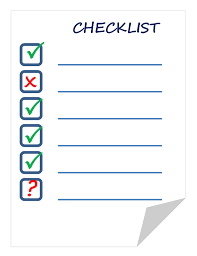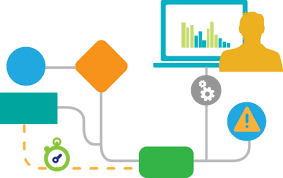If you have heard the term redirect chain but aren’t quite sure what it is, it is simply defined as a page that redirects to a page, that redirects to a page, that redirects to a page and so on. It is a series of redirects from one URL to another. Sometimes you will also find a page redirects to a page, that redirects to a page, then redirects back to the original page. Imagine that scenario but with another redirect chain intermingling with that redirect chain. Those types of chains are a fun treat to fix from an SEO perspective 😀 Now that you know what a redirect chain is, let’s first look at why they aren’t good to have.
Why Don’t You Want Redirect Chains? – Page Load and SEO Decline

In a perfect SEO world, there would be no redirects and all URLs would be final destination. It is very rare for a maintained website to not have any redirects. They should however be kept at minimum. A few main reasons why you don’t want redirect chains is because:
- They make your webpages load slowly. Information is expected to be presented immediately on the web and every second counts. People and search engines don’t like it when things take too long to access. Page load time is also a ranking factor for this very reason. Most ranking factors are based on making the web a better place for people to get the content they want in a fast manner (that is also accurate and easy to use – also ranking factors)
- It may be confusing to search engines if a page redirects to a page then back to the original page
- It wastes valuable crawl time that search bots could be spending digesting your content across multiple pages instead of repeatedly trying to access one page only to find it’s redirecting to a page, to another page, to another page and so on
- Any kind of redirect, permanent or not does not pass all SEO value to the new location. (301 redirects pass 90-99% of SEO value and http to https 301 redirects pass 100% of the value)
- If there are too many redirects in a chain search engines will stop following them – even if they are permanent. Great Scott. :O (The current limit is 5). Too many redirect hops can lead to a loss in traffic, rankings and a URL no longer being indexed
Now that you know why redirect chains are undesirable, let’s jump into how they are created and how they can be prevented.
Common Ways Redirect Chains are Created

There are a number of ways that redirect chains are created. Some of the most common ways can be difficult to prevent. We will go over them in the following list and then provide solutions on how they can be avoided or kept to a minimum:
- Multiple CMSes over time
- Multiple site redesigns without an experienced SEO
- Inexperienced new Developers and SEOs not paying attention to things they need to be considering
- Too many people working on the website at once without a proper process in place
- Unplanned website structure without consideration to SEO or how your business may change over time
How to Prevent Redirects and Redirect Chains (to a Reasonable Degree)

It is important to prevent redirects and redirect chains from even happening in the first place for the above reasons. Knowing what to watch out for comes with experience. While we won’t be listing out every possibility here, our list should give you a good idea of some things that you can keep in mind. We suggest carefully researching:
- One CMS that you can use for a long time
- Planning your content thoroughly. Consider industry topics, relevant keywords people are using
- Local, experienced and dedicated Web Developers and SEOs who can work on your website over a long period of time
- Updates that you want to do before they are implemented, especially where URL changes can happen
- The best ways to organize your content though a solid website structure with optimized categories, subcategories and page names (that include keywords) before deciding which route you want to go
- Make sure to check it your structure at least 3 times and get everyone’s input on your tea,
- Lay out an easy to follow redirect list on a spreadsheet and make sure your development team understands how to read the spreadsheet
- Make sure your development team knows how to correctly implement redirect
- With inexperienced team members things can go awry. An inexperienced developer may do a 301 redirect but forget to make a new page to follow a new website structue
- Set up workflow processes for each team member
Different Types of Redirects and Which to Choose When You Want Search Engines to Pass SEO Value

You will also always want to do a 301 redirect, which will tell search engines that your web page has a permanent new location. If you do another type of redirect like a 302, 303, 307 (usually accompanied with an HSTS policy but can be considered permanent depending on the way it is used and other factors) and finally a 308 which is an experimental permanent redirect and is not recommended.
If the redirect is not a 301 it may be treated as temporary and search engines will treat it like your content has been deleted. Any traffic, authority and keywords you have built up will not be counted. If you discover an error like this you can recover some of the value your URL by fixing the redirect type to a 301 right away.
What Can Happen if You Have a Temporary Redirect Instead of a 301 Permanent Redirect?
If you miss catching a temporary redirect, you may notice your URL is no longer in Google’s index, maybe sites linking to your page have removed their link and as mentioned above, you may notice a dip in traffic. You may also notice general KPIs like leads and sales on a decline, especially for high traffic pages. On a side note, if you have noticed this happening without a redirect chain or many of them present, contact us for help to identify and correct the issue.
How to Fix a Redirect Chain – Use Multiple SEO Tools, Merge Data, Use Formulas and Scripts and Manually Check

Fixing a redirect chain can be a tedious process, but with the help of multiple SEO tools it can help to paint a clear picture of what is going on with your old and new URLs.
- archive.org
- Google Analytics
- A redirect list from your technical team
- .htaccess
- CMS plugins
- Server redirects
- SEO Screaming Frog
- Moz Crawl
Once you have spidered / crawled your website with multiple SEO tools you can then merge / match each row of data. Once that is done you will need to look at the list of pages in the spreadsheet, the URL to look for in each page and then the URL that you need to replace it with. You can then eliminate the redirect chains one at a time, URL by URL, row by row. We suggest doing this manually for the first 10 rows.
Then some fancy Excel or Google Sheets magic can happen where this is all figured out for you. We may come back to this post and share this info 🙂 We suggest manually spot checking 3 URLs per hundred to ensure that scripts / formulas are running correctly. You may need to adjust these areas, especially for one hop, two hops, three hops, if a redirect URL goes backwards / redirect loop, etc. If you aren’t sure how to fix your redirect chains, we can help. You can request a free quote by clicking the button below.
Contact Us for More Information About How to Fix a Redirect Chain and How to Prevent Them

We really understand SEO from a technical standpoint, as well as all other aspects. We are constantly learning new things, making new search engine algorithm discoveries and improving our processes with each new project we take on. Our Lead SEO has 20+ years of marketing experience and has been specializing in SEO for the last 10 years. Contact us today for all of your SEO needs or hire us to fix your redirect chains. Either way, we are always happy and enthused to take on new projects. There is no issue we have not been able to solve to date, including severe negative SEO attacks. We look forward to learning about you and working with you 😀